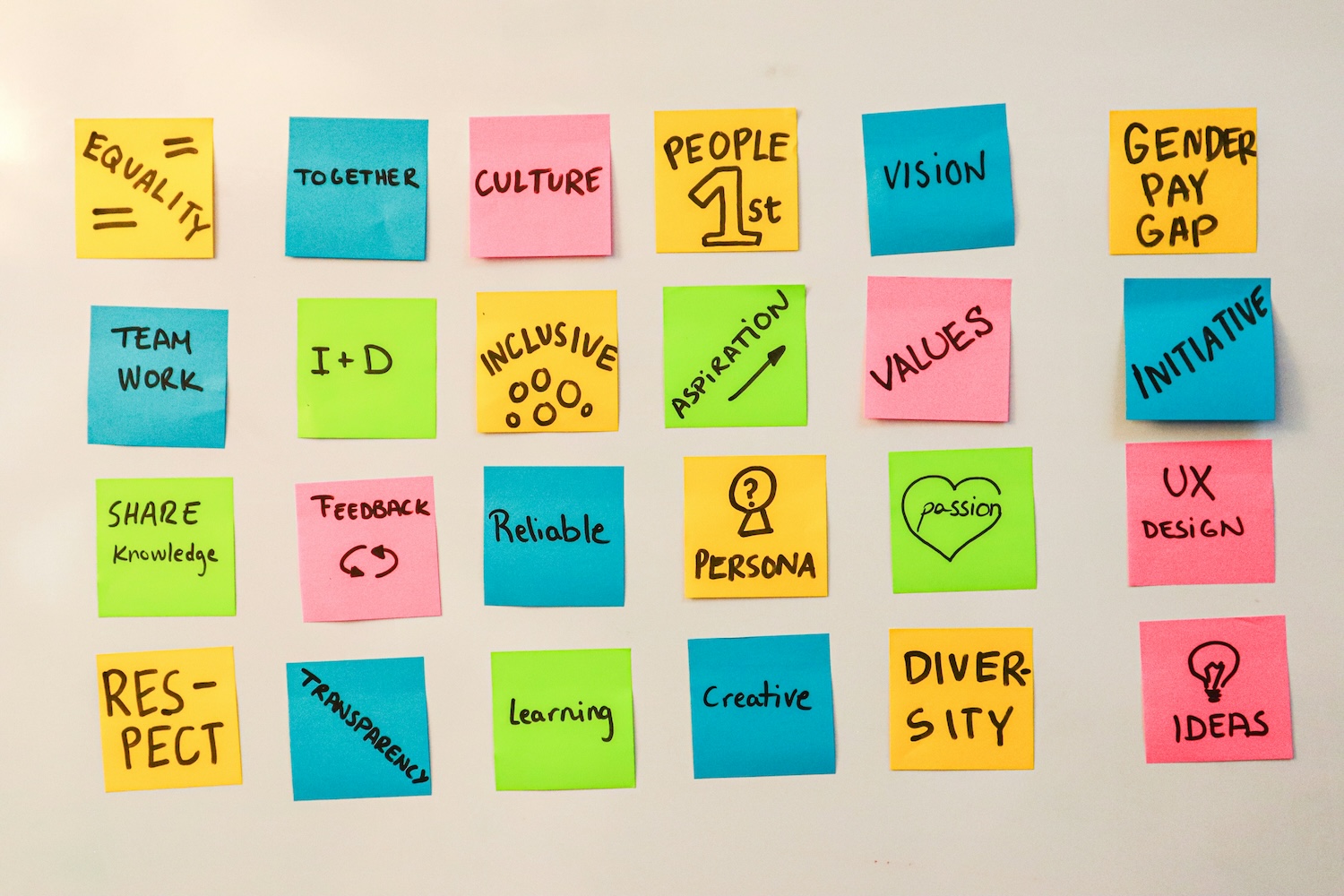Successful managers work hard to recognize employees on a regular basis.
But even the best managers miss opportunities to acknowledge their team’s efforts. When this happens, employee engagement wanes and team morale plummets. Unless, of course, said managers have implemented an effective peer-to-peer recognition program.
Peer-to-peer recognition will help your company reinforce its values, engage employees on a deeper level, and increase team performance. As such, it’s an essential component to success. The question is, how do you build a peer recognition program that actually works?
In this article, we explain what peer-to-peer recognition is, why it can be so beneficial, how to build an effective recognition program in seven steps, and more. Let’s get started!
What is Peer-to-Peer Recognition?
Peer-to-peer recognition is what happens when employees recognize and celebrate each other’s accomplishments. Doing so can increase team engagement and results.
It makes sense. When employees are recognized for their hard work, they’ll continue to give 100%. After all, putting in maximum effort makes them feel like valued members of the team.
Now, peer-to-peer recognition is not the only kind of recognition program out there. Actually, it’s not even the most popular. Top-down employee recognition, when bosses acknowledge employee successes, is what most people think of when they think about “recognition”.
We’re big fans of top-down recognition and think every company should implement this employee engagement strategy. But peer-to-peer recognition is important too. Here’s why…
Help your team recognize each other’s hard work with an intuitive and fun-to-use platform
What Are the Benefits of Peer-to-Peer Recognition?
An effective peer recognition program will help your company promote its values, drive employee engagement, elevate team performance, and improve job satisfaction.
Let’s take a closer look at each of these important benefits:
Promoting Company Values
When employees recognize each other, it helps create a culture of teamwork and collaboration.
Stanford found that a collaborative work environment leads to higher engagement, less fatigue, and more success. So, teamwork and collaboration are definitely values worth promoting.
Peer-to-peer recognition can also help reinforce positive behaviors. Imagine you’re a low-level employee. All you want is to prove yourself to your superiors. Then a veteran teammate says, “Great job on the last project. You crushed it!” You respect this person. In fact, you want to achieve the same level of success that they have in their career.
So what do you do? More of the things you were just recognized for. In other words, peer-to-peer recognition can encourage employees—especially new employees—to behave in specific, company-approved ways that lead to better organizational outcomes.

Driving Employee Engagement
Peer-to-peer recognition can do wonders for employee engagement.
Your staff works hard to accomplish organizational goals. When a fellow team member takes time to say, “Wow, you did an amazing job!” they feel like the work was worth it. Because of this, they’ll continue to give their all on future projects. It makes them feel seen.
Just as important, they’ll be more likely to congratulate their coworkers for their achievements, which will increase said coworkers’ engagement levels, too. Basically, peer recognition fuels a virtuous cycle in which the employees who participate become more committed to their jobs.
Elevating Team Performance
To recap, peer-to-peer recognition promotes company values and employee engagement.
Put another way, peer recognition reinforces positive behaviors and encourages greater commitment. How could team members not perform better when these two things happen?
Now, you might be wondering, “How will my employees perform better?” It’s simple: they’ll produce better results in less time because they’ll care about their work and look for ways to improve it. And to think, all it takes is a bit of positive feedback from a trusted coworker!
Improving Job Satisfaction
Finally, peer recognition programs help build a positive company culture.
This is important because workplace culture is key to retention. Studies show that it can cost as much as 213% of a departing employee’s salary to replace them. So, keeping your workers happy and on your team is one of the most valuable things you can do for your organization.
Start a Stellar Peer-to-Peer Recognition Program in 7 Steps
It’s clear that an employee recognition program will benefit your company in multiple ways. The question is, how do you build an effective program that produces positive results? Like this:
1. Identify Your Goals
The best peer recognition programs aim to achieve specific things.
So, what do you want to accomplish? Greater employee engagement? Less employee turnover? Higher employee morale? Maybe you want your employees to feel appreciated, so they perform better and are able to earn higher customer satisfaction scores. It’s all possible.
Think about darts. You won’t win the game if you can’t see the bullseye. The same goes for peer-to-peer recognition. Identify your goals so you know what to aim for. Then you can build a program that achieves these things. This is the best way to find success.
2. Set a Realistic Budget
We hate to break it to you, but an effective peer recognition program will cost your company money. Don’t worry! The benefits of such a program will more than outweigh the expense.
Still, you need to set a budget before you get too deep into the peer recognition process.
Fortunately, you don’t have to spend a ton of capital on this initiative. Technically speaking, you could just purchase a few ballpoint pens and a ream of paper, then ask your employees to send each other handwritten notes whenever they want to recognize each other’s efforts. We don’t recommend this approach, of course. But it is an option for cash-strapped organizations.
What do we recommend? An investment in a reliable peer recognition platform. We’ll talk more about these tools in the next step. For now, just know that they’ll vastly improve your program.
You might also want to spend money on incentives and rewards. Some peer recognition programs allow employees to give each other small gifts, like office knick-knacks and company swag, to recognize efforts. Others allow employees to give each other points. Said points can then be redeemed for real-world prizes, such as monetary rewards or extra paid time off (PTO).
3. Invest in a Peer Recognition Platform
If you’ve allocated a budget for a peer recognition platform, it’s time to choose a tool. There are plenty of options out there. We’re a bit biased, but we recommend Kudoboard.
Our platform will enable your employees to send each other digital cards that contain messages, photos, and/or videos. Said cards can be private or displayed in a public manner. Either way, they’ll help employees feel appreciated for their hard work, which is essential.
When choosing a platform for your team, look for the following criteria:
Cost: Your platform needs to fit inside your predefined budget. Cut out potential options that cost more than your organization can realistically spend on this kind of tool.
Features: Your platform should enable your company to build the peer recognition program it wants. Cut out potential options that don’t include must-have features.
Reviews: Your platform should be well-liked by past and current users. Cut out potential options that reviewers claim are difficult to use and/or offer poor customer service.
Free Trials: If at all possible, get first-hand experience with the platform you want to invest in. If the provider doesn’t offer a free trial, sign up for a product demo instead.
If you choose the right tool, you’ll be able to build a strong recognition culture within your organization. Once this happens, you’ll almost certainly achieve more success.
4. Choose Metrics and KPIs to Track
How do you know if your peer-to-peer recognition program is working? You take a look at the numbers. But you can only do this if you track the right metrics and KPIs, such as:
Participation Rate: This metric measures the percentage of employees who participate in your peer recognition program. The higher this number is, the better.
Employee Satisfaction: This metric measures the satisfaction levels of your team. A quality peer recognition program should help these levels rise to new heights.
Employee Retention: This metric measures the percentage of employees who stay with your company over time. Again, a quality peer recognition program should increase this metric. If your retention doesn’t improve, you may need to adjust your efforts.
Progress Towards Goals: What goals does your company want to achieve? Are you getting closer or farther away from them since you’ve implemented your peer recognition program? The best programs help businesses meet their objectives in less time.

5. Launch Your Peer Recognition Program
It’s time to launch your peer recognition program and see how it performs in the wild!
If you’ve followed our advice thus far, you should be in a good spot. But don’t expect your program to be perfect. There will definitely be things to adjust. (We’ll talk about that soon.)
That said, building a peer recognition program takes a lot of work. If you’ve successfully reached the launch stage, you deserve a round of applause. So, take a moment to enjoy your achievement! Reward yourself, if you feel so inclined. Then buckle down and get back to work…
6. Look for Unique Recognition Opportunities
Your employee recognition platform will help your team send positive messages to each other. This is a great way to recognize performance. But it’s not the only thing your staff can do.
Encourage your employees to recognize their peers in more unique ways, too.
For example, a team member could shout out a coworker on LinkedIn. Or send them a handwritten card. Or buy them coffee. If one of your employees has access to a company platform, such as a blog or podcast feed, they can even feature a colleague on these channels.
Just make sure that the feature fits the medium, as blogs, podcast feeds, and similar channels are typically public-facing entities that can affect your company’s reputation in a significant way.
7. Evaluate Your Recognition Efforts
Last but not least, study your peer recognition efforts. Are they boosting team morale and performance? What can be improved to maximize your staff’s job satisfaction?
The best employee recognition programs—both peer-to-peer and top-down ones—evolve with the times. Yours should too, or it will eventually fail to meet the goals you identified in step one.
So stay curious, evaluate your recognition program, and adjust your approach as necessary.
Best Practices for Effective Peer-to-Peer Recognition
The seven-step process above will help you create an effective peer recognition program. But if you really want to make that program sing, you need to implement these four best practices:
Make it known
First, make sure your employees know about your new peer recognition model.
When can they participate? How can they participate? And will they receive any perks for doing so? These are important questions to answer—before and after you launch the program.
So, start early. Tell your employees that you’re working on a peer-to-peer recognition system. Tell them why this initiative is important to your company. (Reminder: because allowing employees to express gratitude and encouragement to each other promotes company values, increases employee performance, etc.) And explain how the program will work.
Once you launch, train employees to use the employee recognition software you’ve chosen. That way, they feel comfortable giving peer feedback. Just as important, make sure the rewards system you implement is clear. This will help encourage employees to actually participate.
Make it timely
Second, encourage your employees to offer frequent peer recognition.
There are plenty of opportunities for them to do this. For example, they can send congratulatory messages when a team member finishes an important project. Or when their department hits a critical KPI. Or to celebrate milestones, like a work anniversary or a certain number of sales.
Frequency will help you and your team build a recognition-rich culture. It will also ensure timeliness. Your team won’t wait weeks to congratulate each other for a job well done because they’ll become accustomed to heaping praise on each other immediately after an achievement. This is important because timely feedback is always more powerful than delayed feedback.
Make it authentic
You want your employees to give each other public recognition on a regular basis. But you do not want them to force feedback. Or worse, lie to simply “check a box” on their to-do list.
Your team’s peer-to-peer recognition efforts should be authentic—always. If they’re not, your employees may develop bad habits. After all, they might receive encouragement for less-than-stellar behaviors, then duplicate said behaviors to win more praise. All because a certain employee felt like they had to give more recognition to their peers, but couldn’t find anything that was worthy of attention. So they fib a bit and shine a spotlight on mediocrity.
You can avoid this scenario by encouraging employees to not only give regular recognition, but also explain why they’re recognizing their peers in the first place. This will help limit forced feedback.
Make it fun
Your peer-to-peer recognition program should be fun. If it isn’t, your employees won’t take time to recognize each other’s efforts, and it will be harder to build a positive work environment.
Good news: there are a couple of easy ways to spice up the recognition process:
Invest in the right tool: A quality employee recognition platform will make it easy for peers to congratulate each other. This is important because recognition is WAY more fun when team members don’t have to finagle technology. A hard-to-use app will be a disaster for your peer recognition program and should be avoided at all costs.
Encourage different kinds of recognition: Allow your employees to send each other digital messages, funny memes, personal videos—even handwritten notes—to express their gratitude for one another. This will allow team members to show their creativity and recognize their coworkers in unique ways, which will increase their enjoyment.
Consider implementing an incentives program: Peer recognitions, in and of themselves, are usually enough. But if you really want to up the entertainment value of your recognition program, offer incentives. For example, you can use a point-based system. Every time an employee is recognized for their work, they receive a point. They can then spend points to redeem desk accessories, gift cards, additional PTO, etc.
Recognize Your Team the Right Way With Kudoboard
There’s no doubt about it, peer-to-peer recognition is important. Giving team members a way to congratulate each other for their achievements promotes core values, increases employee engagement, and leads to better business outcomes.
When it comes to peer recognition software, you can’t go wrong with Kudoboard. Our platform is easy to use, powerful, and flexible.




